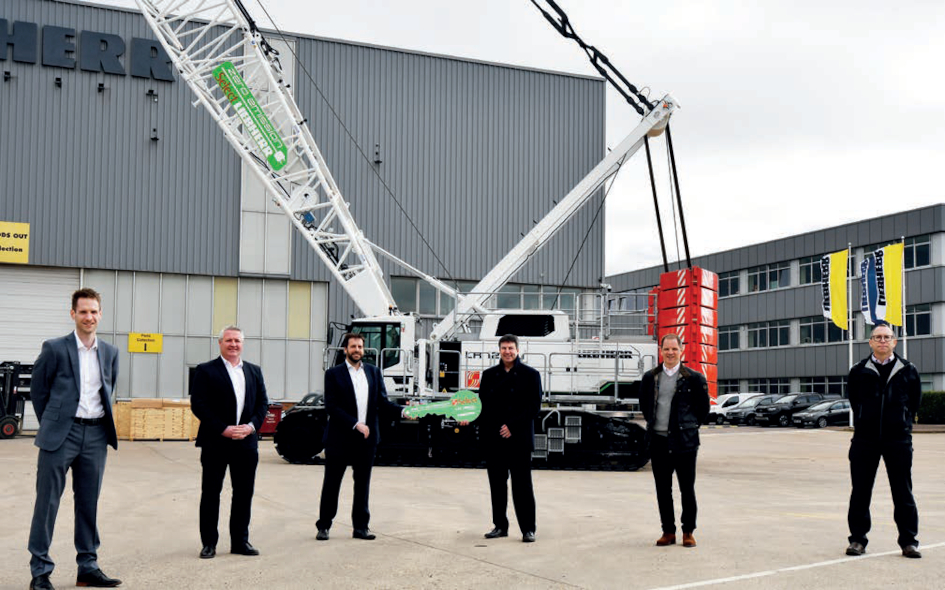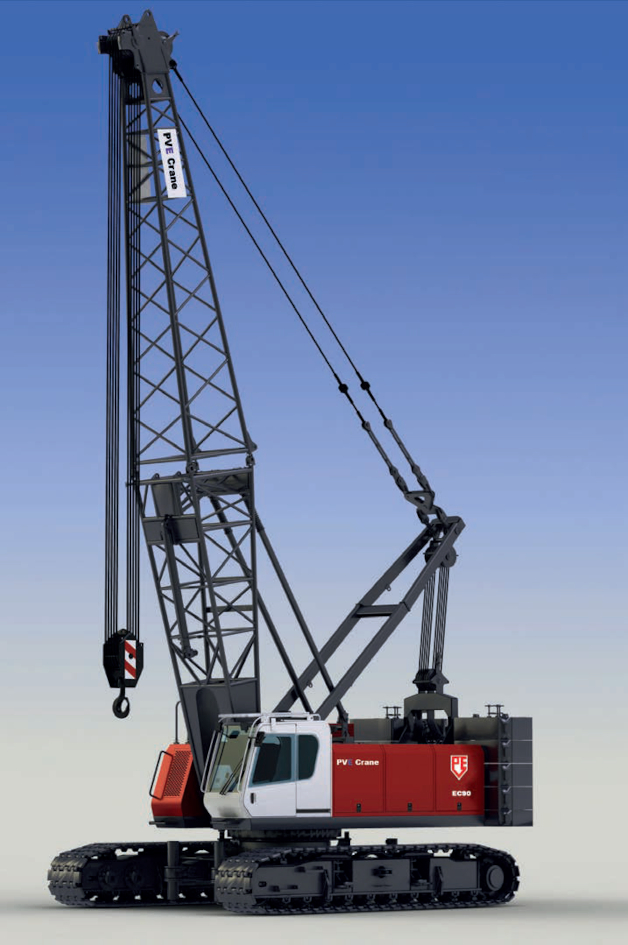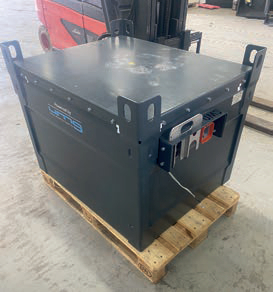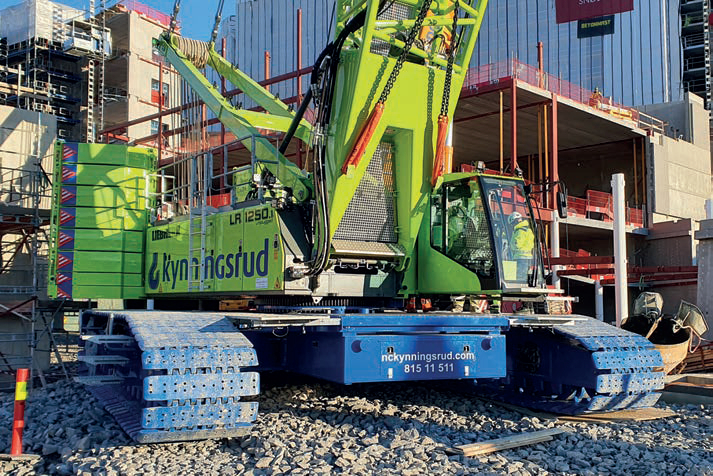Down to zero
27 July 2021Battery-powered cranes have existed for decades, but the first emission free crawler cranes were only launched less than a year ago. Sotiris Kanaris reports.
Efforts to reduce greenhouse gas emissions have intensified in recent years, through central and local government policies, as well as certain businesses setting up strategies to reduce their own carbon footprint.
Holger Streitz, the managing director design for crawler cranes, deep foundation equipment and duty cycle crawler cranes at Liebherr-Werk Nenzing GmbH, says these actions have created demand for zero emission machines across different industries, including construction.
In 2017, Liebherr started working together with Suncar HK for the development of the world's first battery-powered drilling rig LB 16 unplugged. When the company approached the market about this model, they were told that the machine had to be autonomous; customers did not want to use a cable on the jobsite. However, when the first drilling rigs were out in the field, it became apparent that many occasionally connected the machine to the power supply.
Streitz says this allowed the company to reduce the size of the battery used. “It was then logical to us to electrify crawler cranes, as the energy consumption of this machine type is the lowest.”
The manufacturer then decided to develop the world’s first battery-powered lattice boom crawler crane on its own, with Suncar HK acting as a consultant. For the first model, Liebherr chose the 250t LR 1250.1 unplugged because of the popularity of this capacity class and the availability of sufficient space for the battery pack.
The development team brought together experts from a wide range of disciplines: mechanical, thermodynamics, electrical and software engineers; mechanics; safety personnel. Having a new project brought excitement to the team but the novelty also posed challenges, according to Streitz.
“The development process had various steps: from the definition of the required battery size, to the selection of components and their packaging in the machine, and finally to the development of the software and the design of the thermal management system.”
“We all had to learn a lot of new things and we are still learning,” he continued, mentioning EU’s Batteries Directive and rules on radiation. He added that the mechanics had to undergo special training to acquire the skills to work with high voltage, as they had always worked with low voltage.
Streitz says both the individual components of the battery drive system and the complete machine were rigorously tested. The tests included proof of the overall performances under various conditions, as well as electromagnetic compatibility measurements. The machine met all the requirements of the Machinery Directive.
After just over a year of development, the manufacturer announced the launch of the 250t LR 1250.1 unplugged as well as the 200t LR 1200.1 unplugged. Both models are driven by electric engines with a system performance of 255kW. The cranes can be recharged on a conventional jobsite electric supply (32 A, 63 A) in four and a half hours, and optionally with 125 A in two and a quarter hours. The capacity of the battery is designed for four hours lifting operation.
Compared to older crawler crane models manufactured in Nenzing, the performance is the same, Streitz highlights. There are some differences in design, with the new models having improved platforms and railing on the uppercarriage, additional add-on wing for mounting lights or cameras, and a new cabin. These changes will be incorporated into all the future models, not just the ones from the unplugged series.
The next cranes of the series will be the LR 1160.1 unplugged and the LR 1130.1 unplugged. “Both machines are in the design phase and we expect the machines to be tested at the end of the year.”
Streitz says the development process is shorter because all the models belong to the same modular family. “The only thing is to find the position of the components and then we can use our standardised approach. Incorporating the battery into the LR 1130.1 is a bit trickier than the others because it is much shorter.” He added that this technology could be used even on the highest capacity crawler cranes.
MARKET
The introduction of this model, unsurprisingly, has caught the crane market’s attention. “We have received enquiries from many places in the world, not only Europe but also America, Middle East and Asia.”
The first LR1250.1 unplugged was delivered to Norwegian crane company Kynningsrud Nordic Crane at the end of last year, while a second unit was delivered to UK company Select Plant Hire earlier this year. Another unit will soon be delivered to a Swedish company.
Streitz says the early adopters buy the battery-powered cranes not because of enthusiasm for the new technology but because they understand the benefits of these machines.
In terms of the advantages of the new machines compared to the corresponding models with combustion engines, he says they are emission free and are significantly quieter during operation. He adds that the costs of maintenance will be lower, as electric drives require less work than a combustion engine, which has a complex exhaust after treatment system. Another advantage is the reduction in energy costs.
As to what could hold some companies back from purchasing the unplugged cranes, Streitz says that price—which is higher than the models with a combustion engine—could be one factor. He explains that the focus should not be on price because the total cost of ownership will be lower, especially if the price of diesel increases in the coming years. “Also if there will be limitations in jobsites regarding CO2 emissions, the battery-powered cranes will be the way to be part of the game.”
“It is a new technology, so some customers may have concerns about reliability and performance. As a supplier, we can assure them that the machines are reliable and offer high performance.”
In terms of what could trigger demand for the battery-powered machines in the future, Streitz believes it will be a combination of local regulation, government regulation and green finance.
Talking about the local level, he mentioned the establishment of low or zero emission zones. He also gives the example of initiatives such as the C40 Cities Climate Leadership Group, with 97 cities working together with the objective to fight climate change.
“The next thing is that governments will spend money on subsidies for cleaner products, for instance Norway’s government is paying for extra cost of zero emission products. There will also be a CO2 taxation in the future. We think that construction business will be included in the CO2 trade certificate.”
He also mentioned government actions banning the use of diesel, like the UK, where as of first of April 2022 some sectors, including construction, will no longer be able to purchase red diesel.
Is Liebherr planning to produce only battery-powered machines in the future?
“At the moment it is very hard to predict the long term global acceptance of these unplugged products. There are several technologies coming up: hydrogen, fuel cell, synthetic fuel. These have different technology readiness levels.”
Streitz says that there are currently so many projects on batteries and the technology evolves so fast, that they will remain the strongest alternative to diesel in the near future. He adds that there will still be a market for crawler cranes with combustion engines for applications outside the urban centres, where there is no option for machines to connect to a power supply.
NEW ENTRANT
Crane rental company PVE Cranes and Services is entering the battery-powered crawler crane market. At the end of last year, it established a dedicated manufacturing subsidiary called PV-E Crane, based at the company’s headquarters in Oosterhout, the Netherlands.
The announcement came as a surprise to the market, because the company sold its piling and drilling manufacturing business a few years ago in order to concentrate on its rental activities. Orlando de Jonge, sales manager at PVE Cranes and Services, explains that the company decided to start producing its own equipment again due to the gap in the market for electric crawler cranes.
It all started when a Dutch contractor asked PVE whether they could supply zero emission crawler cranes for an environmentally-sensitive project in the country. “At that time, in June 2020, there was no brand selling this type of equipment,” says de Jonge.
The company then approached a number of major local contractors and found a strong appetite in the market for these battery-powered machines. The reasons behind the demand were companies’ own sustainability strategies as well as public tenders asking for zero emission equipment.
The initial idea was to use an existing machine, replace the engine with an electric one and add battery boxes. However, they quickly realised that it was not as simple and therefore decided to develop a completely new machine.
The design of the PV-E Crane models features interchangeable battery packs. “The batteries are interchangeable, so that it is possible to work a second shift with full batteries or to charge them elsewhere if there is no grid power available on the job,” De Jonge explains.
The company says the cranes can work with the single set of batteries for more than eight hours without being connected to a power supply, and that they can be fully recharged using a 63 Amp site supply in less than three hours per battery box. De Jonge adds that the machines do not emit CO2 and NOx, while noise levels during operation are very low.
PV-E Crane offers two series of emission-free crawler cranes, the EC series of lattice boom crawler cranes and the ECT series of telescopic boom crawler cranes. The telescopic boom crawler cranes have a lifting capacity of 70t, 80t and 120t, while the lattice boom crawler crane models belong to the 80t, 90t, 100t, 135t and 160t classes. A 250t lattice boom crawler crane is under development.
“Together with A-list brands, such as Bosch Rexroth, Avezaat, Hirschmann and Fuwa, we developed a fantastic product line with both lattice boom and telescopic boom. After electrification and various modifications, all models have been fully reworked by lifting engineering company Eager.one according to CE standards,” De Jonge says.
The first model that the company aims to introduce to the market is the 160t EC160, which has a 43m lattice boom and 42m luffing jib. At the time of writing, in mid-June, it is being assembled. VolkerWessels has ordered three units of this model, while fellow Dutch contractor Heijmans has purchased an 80t lattice boom crawler. De Jonge says the first unit is to be delivered in the fourth quarter of the year.
The manufacturer has already been approached by companies in the UK, Russia, Singapore, Australia, Belgium, Ireland, France, Denmark and Colombia.
“A lot of contractors believe that electric is the new standard. If you want to refresh your fleet, will you invest in a crane with a Tier 5 diesel engine if you already know that the market for them will shrink or if you will need to spend money to convert it into an electric crane in the future?”
He says the initial cost of purchasing an electric crane may be slightly above that of a diesel one, but the return on investment is high because of savings on fuel costs and lower maintenance costs.
The company aims to build a strong dealer network in order to offer aftersales services of the highest standard.
Apart from the sale of new PV-E Crane electric crawler cranes, the PVE Cranes and Services group entered the market for turning new and used crawler cranes to battery-powered ones, through its newly-established subsidiary 2 Electric business. 2 Electric, also based in Oosterhout, will use the same technology as the group’s manufacturing division.
 Select Plant Hire, part of engineering firm Laing O’Rourke, took delivery of the UK’s first Liebherr LR 1250.1 unplugged. Pictured at the handover at Liebherr- GB’s facility in Biggleswade are, left to right, Select’s Paul Griffin, Alex Warrington and Eddy Carr, Richard Everist and Mark West of Liebherr, Steve Bradby of Select.
Select Plant Hire, part of engineering firm Laing O’Rourke, took delivery of the UK’s first Liebherr LR 1250.1 unplugged. Pictured at the handover at Liebherr- GB’s facility in Biggleswade are, left to right, Select’s Paul Griffin, Alex Warrington and Eddy Carr, Richard Everist and Mark West of Liebherr, Steve Bradby of Select.


